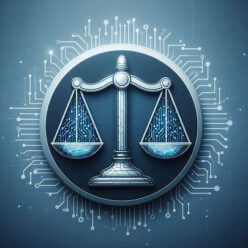The decision T1173/97 – cited in the G1/19 – is about a claim regarding a “computer program product”. The question was whether such a claim is excluded from patentability under Art. 52(2) and (3) EPC.
In this case an appeal was lodged against a decision of the examining division. The appellant requests the grant of a patent based inter alia on several independent claims. The subject matters of the independent claims are as follows:
- claim 1 provides a method for resource recovery in a computer system,
- claim 14 provides a computer system,
- claim 20 provides a computer program product directly loadable into the internal memory of a digital computer and performing the steps of claim 1, and
- claim 21 provides a computer program product stored on a computer usable medium based on the computer system.
The subject matter of the independent claims 1 and 14 have been considered by the examining division to be patentable over the prior art. However, the subject-matter of claims 20 and 21 was regarded as being excluded as such from patentability under Article 52(2) and (3) EPC.
View of the Board of Appeal (reasons, point 13)
In the view of the Board of Appeal, a computer program claimed by itself is not excluded from patentability if the program, when running on a computer or loaded into a computer, brings about, or is capable of bringing about, a technical effect which goes beyond the “normal” physical interactions between the program (software) and the computer (hardware) on which it is run.
“Running on a computer” means that the system comprising the computer program plus the computer carries out a method (or process) which may be of the kind according to claim 1.
“Loaded into a computer” means that the computer programmed in this way is capable of or adapted to carrying out a method which may be of the kind according to claim 1 and thus constitutes a system (or device or apparatus) which may be of the kind according to claim 14.
Furthermore, the Board is of the opinion that with regard to the exclusions under Article 52(2) and (3) EPC, it does not make any difference whether a computer program is claimed by itself or as a record on a carrier (following decision T 163/85, OJ 1990, 379, “Colour television signal/BBC”, as cited above).
Further technical effect may be known in the prior art (reasons, point 8)
The Board takes this opportunity to point out that, for the purpose of determining the extent of the exclusion under Article 52(2) and (3) EPC, the said “further” technical effect may, in its opinion, be known in the prior art.
Computer program product regarding patentable method not excluded (reasons, point 9.6 to 9.7)
A computer program product which (implicitly) comprises all the features of a patentable method (for operating a computer, for instance) is therefore in principle considered as not being excluded from patentability under Article 52(2) and (3) EPC.
It is self-evident that a claim to such a computer program product must comprise all the features which assure the patentability of the method it is intended to carry out when being run on a computer. When this computer program product is loaded into a computer, the programmed computer constitutes an apparatus which in turn is able to carry out the said method.
Given that, according to the above, in the Board’s opinion a further technical effect is necessary, deriving from the execution of the program, such a requirement will be satisfied when the claim is formulated as specified above. Such a claim contains functional features and its scope is defined in terms of the function performed by the computer program as described in that claim.
Conclusion
If a method claim is patentable, a computer program claim may also be directed to the claimed method. This is – when the method is patentable – „automatically“ not excluded from patentability.
